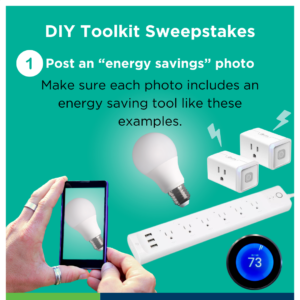
Inflation Reduction Act Electric Rebates Explained
Learn how this federal act can help you go all-electric at home and on the road with the support of rebates and tax credits.
What is the Inflation Reduction Act?
The Inflation Reduction Act is a federal investment package that directs roughly $370 billion in clean energy and initiatives to fight climate change, among other tactics. Part of this funding is going directly to help residents go all-electric at home and on the road. Learn more about how the Inflation Reduction Act could support your next steps in going all electric.
There are federal, state and regional rebates and tax credits available for efficient electric appliance upgrades. Please note that there are income qualifications for the state rebates. info
Why are some rebates not available right now?
The Inflation Reduction Act is a 10-year plan and the rebate programs and tax credits are scheduled to roll out throughout the upcoming years. State rebates also are planned to be available later in 2024 as noted by the California Energy Commission. Providing information in advance to rebate availability can help residents plan for upcoming home projects.
State rebates will be available to residents who meet income qualifications. Households that earn up to 150% of the area’s median income will be eligible for state rebates. While this specific income limit has yet to be determined for Santa Clara County, it is estimated to be around $220,000 for a family of four. If you make more than $220,000, there is no need to wait for the state rebates, as this income exceeds the eligibility range.
You can sign up with your email to stay up to date on tax credits and rebates with the White House Clean Energy webpage here.
What are the state rebates for home appliances?
The state of California plans to release two rebate programs for all-electric home appliances – HOMES and HEERA. Both of these programs are part of the Inflation Reduction Act but are administered through the state. While the details of the rebates are continuing to be updated, these programs aim to help reduce the cost of going all-electric at home.
- The HEERA Rebate program provides point-of-sale rebates to help low-income and moderate-income households go all-electric. Rebate amounts are dependent on income levels and technology.
- The HOMES Rebate program is focused on energy efficiency, with rebates ranging from $2,000 to $4,000 in total. Rebate amounts will vary for individual households based on the amount of energy usage reduced with the home upgrades and income level.
It is important to note that the HEERA and HOMES rebate programs cannot be stacked together. For households wanting to switch from gas to electric appliances, the HEERA rebates will generally be more financially beneficial.
Can SVCE rebates be applied in addition to federal rebates?
Yes, the rebates available as a customer of SVCE can be applied in addition to federal rebates. Please note that the federal rebate programs may have different rules, including equipment eligibility, contractor requirements, and rebate applications, so be sure your project meets all requirements to be eligible for both rebates.
Additional Resources
Home Rebates & Tax Credits
- Switch Is On: Enter your zip code on this incentive finder tool to discover federal, state and local rebates
- White House Clean Energy Webpage: Sign up to receive the latest updates and information
- IRS Inflation Reduction Act Webpage: Learn more about how the tax laws and updates for the Inflation Reduction Act
- U.S. Department of Energy’s Energy Savings Hub: A one-stop shop with electrification information tailored to whether you’re a homeowner, renter or driver and shows relevant upgrades, customized plans to help maximize savings, and available incentives with relevant tax information.
- Energy Star: Learn the specifics for a panel upgrade
- Rewiring America: Check out their IRA Guide
- BayREN Home+: Explore regional rebates for all-electric home updates through BayREN
- Energy Star Certification Guidance and Zero Energy Ready Home Guidance: New IRA tax credits provide new construction (or gutted & remodeled) residential buildings with $500-$2500/unit for Energy Star Certification and $1000-$5000/unit for Zero Energy Ready Home (ZEHR) Certification.
Electric Vehicle Incentives
- EV Assistant: Customize available federal, state and local incentives based on your income and your car of interest
- IRS New EVs: Check out the list of new EV makes and models eligible for the tax credit
- IRS Used EVs: Check out the list of used EV makes and models eligible for the tax credit
- U.S. Department of Energy’s Energy Savings Hub: A one-stop shop with electrification information tailored to whether you’re a homeowner, renter or driver and shows relevant upgrades, customized plans to help maximize savings, and available incentives with relevant tax information.
- Plug-in America: Additional information on EV incentives


